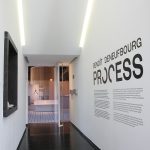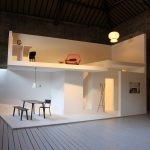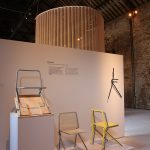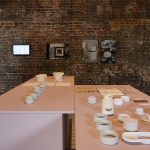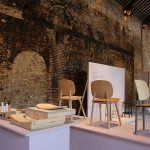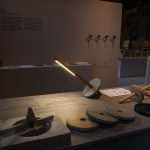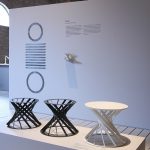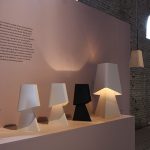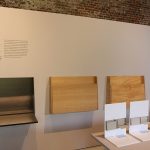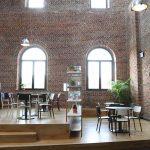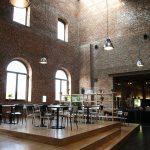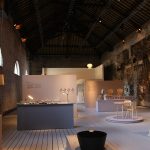Benoît Deneufbourg. Process @ CID – centre d’innovation et de design au Grand-Hornu
Whereas today the term “design” is regularly understood as an adjective or a noun, its origin is as a verb. It is something one does.
The interesting and relevant being that everyone does it differently.
With the exhibition Process the centre d’innovation et de design au Grand-Hornu explore Belgian designer Benoît Deneufbourg’s definition of that verb.
Born in La Louvière, Benoît Deneufbourg initially studied architecture at Le Cambre Brussels, before switching to interior architecture, graduating from ESA Brussels in 2001. The switch of focus coming, as Benoît explains, with the realisation that although studying architecture his principle focus and attention in any given project was invariably the smaller components, the details.
And why interior architecture, why not not rather product or industrial design, we asked?
“Because I still wanted a connection with the building, through the objects, and for me industrial design was too specific, but with interior design you have the tools which enable you to go in different directions, for example, furniture design, product design, architecture and that was important for me, to have something more multi-disciplinary”
And with that very motivation Benoît established his own studio in Brussels in 2004, and from where he has realised numerous interior design, scenography, product design and furniture design projects, the latter two arguably being that for which he is (popularly) best known, and in which context Benoît Deneufbourg has established a portfolio of products with manufacturers as varied as Cruso, Normann Copenhagen, Interni Editions or Another Country.
Our first introduction to Benoît Deneufbourg was through his Paddle Chair for Belgian manufacturer Cruso, a product which, if we recall correctly we first saw in Milan at a Belgian design showcase, that may not be true, but that is how we remember it, what is beyond question is that we first really got to grips with Paddle Chair in the canteen at MAD Brussels. We were supposed to be doing something else, got sidetracked by the Paddle Chair.

Paddle Chair for Cruso by Benoît Deneufbourg, as seen at Benoît Deneufbourg. Process, CID – centre d’innovation et de design au Grand-Hornu
There are numerous types of design exhibition, including, amongst others, monographic biographies of designers, those which take a historical perspective, more conceptual formats or those which explain the mechanics of design. Process is, as the name cleverly implies very much the latter, whereby despite focusing entirely on Benoît Deneufbourg he is in many regards but a conduit, a medium through which design is explored.
Which isn’t to say Benoît is ignored in the exhibition, far from it, he is very present, and as an exhibition Process provides a very nice introduction to not only his work but how he works, how he understands design. When we first became acquainted with Paddle Chair we were very taken by its logic and its visual confidence, viewing it in Grand-Hornu in context of Benoît’s wider canon we understand this logic less as logic and much more as intuitiveness, his work generally containing, for us, a high degree of intuition in terms of construction and/or usability, whereby this focus on the intuitive leads to a visual clarity, because it can do nothing else. Not that “intuitive” should be misunderstood as “easy”, sometimes the path to the intuitive is the harder, longer of two possible routes, requiring as it does a very precise understanding. Nor should “visual clarity” be misunderstood as “visual lightness”, some of Benoît’s works posses such, many don’t, some are really quite dominating pieces, but all posses that visual character which they require, that visual character which allows for meaningful proportions and a coherent composition. And all starting, for us, with the inherent intuitiveness.
Something perhaps best exemplified by the chair Donald, a stupidly, stupidly simple yet thoroughly articulate and engaging object, and a work which also neatly highlights the vagaries of the furniture industry: how a work like the Donald chair can still be a studio prototype is beyond us. But then our souls, and indeed this blog, are haunted by innumerous tales of objects that should be globally celebrated but languish in designer’s archives. Then again we didn’t get to sit on it, maybe its uncomfortable, which we genuinely doubt, but sometimes one needs straws to cling to.
By we digress, ultimately as an exhibition Process isn’t about the products Benoît creates but how he creates them as an annotated example of how designers create. To this end Process presents sketches, models, prototypes and finished works which provide for a readily accessible, informative and entertaining sojourn through the design process, the considerations on materials, connections, production, interactions, form et al entailed within, how Benoît Deneufbourg approaches and understands such issues and thereby how generally, and specifically in context of Benoît Deneufbourg, an idea approaches its final form.
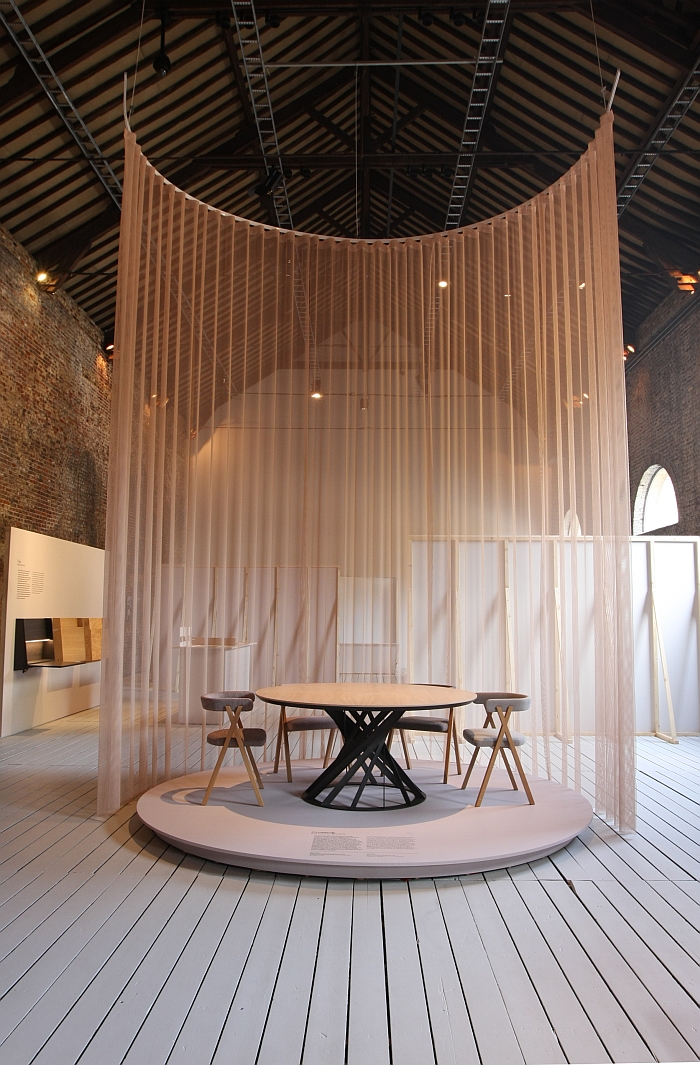
Twist table and Crossing Chair for Interini Edition by Benoît Deneufbourg, as seen at Benoît Deneufbourg. Process, CID – centre d’innovation et de design au Grand-Hornu
At the risk of repeating ourselves and sounding somewhat prematurely like the old bores we know we’ll one day become, the term design has always enjoyed a precarious existence, always been open to exploitation, back in the day protecting it was simpler, in our contemporary instantaneous, visual, society such is increasingly difficult, design risks becoming just another empty term everyone uses but no one really considers. Like love, choice or sorry.
Which is why exhibitions exploring the mechanics of design are so important, allowing as they do for reflections on the origins of the term and by extrapolation of our individual relationship(s) to design. These pages are full of such exhibitions, and essentially all are the same, but all are essentially very different, because they present the positions and understandings of one designer and therefore each such exhibition has the potential to provide the viewer with new insights and/or help explain something that was perhaps previously unclear.
Such is dependent as much on the attitude with which the visitor approaches the exhibition as with the designers attitude.
In terms of the latter the open, uncluttered scenography and intelligent use of short bilingual French/English texts presents Benoît Deneufbourg’s position(s) in a clear, concise manner both for design professionals focusing on the minute specifics, and also for lay visitors looking for a more elementary access point to contemporary design. In terms of the former, that is up to you.
As ever with design exhibitions you don’t have to like all the products on show, don’t have to agree with all decisions made, important alone is the discourse established with the works and that through such you develop your own definition of design (adj.), design (n.) and most importantly design (vb.), a process.
Benoît Deneufbourg. Process runs CID – centre d’innovation et de design au Grand-Hornu, Site du Grand-Hornu, Rue Sainte-Louise 82, 7301 Hornu until Sunday February 3rd
Full details can be found at www.cid-grand-hornu.be
- Benoît Deneufbourg. Process, CID – centre d’innovation et de design au Grand-Hornu.
- House of an artiste, an interior design challenge set for Benoît Deneufbourg in context of Process
- Donald Chair by Benoît Deneufbourg, as seen at Benoît Deneufbourg. Process, CID – centre d’innovation et de design au Grand-Hornu
- Totem for CID et Keramis by Benoît Deneufbourg, as seen at Benoît Deneufbourg. Process, CID – centre d’innovation et de design au Grand-Hornu
- The development work for Paddle Chair……
- The lamp project 1 + 1 by Benoît Deneufbourg, as seen at Benoît Deneufbourg. Process, CID – centre d’innovation et de design au Grand-Hornu
- Twist for Interini Edition by Benoît Deneufbourg, as seen at Benoît Deneufbourg. Process, CID – centre d’innovation et de design au Grand-Hornu
- La Liseuse for Macrolux by Benoît Deneufbourg, as seen at Benoît Deneufbourg. Process, CID – centre d’innovation et de design au Grand-Hornu
- Flap for MMooD by Benoît Deneufbourg, as seen at Benoît Deneufbourg. Process, CID – centre d’innovation et de design au Grand-Hornu
- The new cafeteria area as designed by Benoît Deneufbourg for CID – centre d’innovation et de design au Grand-Hornu
- The new cafeteria area as designed by Benoît Deneufbourg for CID – centre d’innovation et de design au Grand-Hornu, the split level floor is made from locally salvaged wood.
- Benoît Deneufbourg. Process, CID – centre d’innovation et de design au Grand-Hornu
Tagged with: Benoît Deneufbourg, CID - centre d'innovation et de design, Grand-Hornu, Hornu, Process

